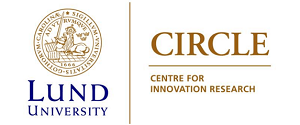No 2016/15: R&D and Productivity in the US and the EU: Sectoral Specificities and Differences in the Crisis
Davide Castellani (), Mariacristina Piva (), Torben Schubert () and Marco Vivarelli ()
Additional contact information
Davide Castellani: Henley Business School, University of Reading, Postal: Reading, UK
Mariacristina Piva: Università Cattolica del Sacro Cuore, Postal: Piacenza, Italy
Torben Schubert: CIRCLE, Lund University, Postal: CIRCLE, Lund University, PO Box 117, SE-22100 Lund, Sweden
Marco Vivarelli: Università Cattolica del Sacro Cuore, IZA, UNU-MERIT, Postal: Italy, Germany, Netherlands
Abstract: Using data on the US and EU top R&D spenders from 2004 until 2012, this paper investigates the sources of the US/EU productivity gap. We find robust evidence that US firms have a higher capacity to translate R&D into productivity gains (especially in the high-tech industries), and this contributes to explaining the higher productivity of US firms. Conversely, EU firms are more likely to achieve productivity gains through capital-embodied technological change at least in medium and low-tech sectors. Our results also show that the US/EU productivity gap has worsened during the crisis period, as the EU companies have been more affected by the economic crisis in their capacity to translate R&D investments into productivity. Based on these findings, we make a case for a learning-based and selective R&D funding, which - instead of purely aiming at stimulating higher R&D expenditures - works on improving the firms’ capabilities to transform R&D into productivity gains.
Keywords: R&D; productivity; economic crisis; US; EU
29 pages, May 9, 2016
Full text files
201615_castellani_et_al.pdf
Questions (including download problems) about the papers in this series should be directed to Torben Schubert ()
Report other problems with accessing this service to Sune Karlsson ().
RePEc:hhs:lucirc:2016_015This page generated on 2024-09-13 22:16:05.

